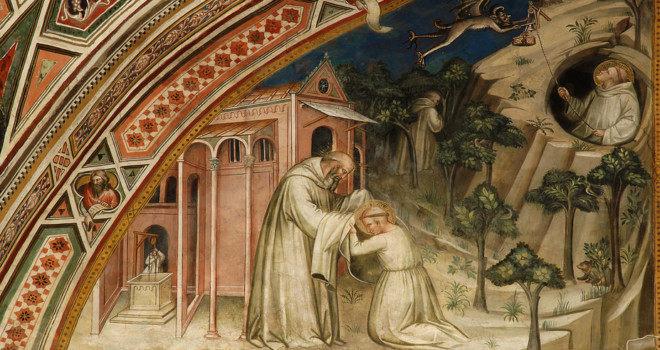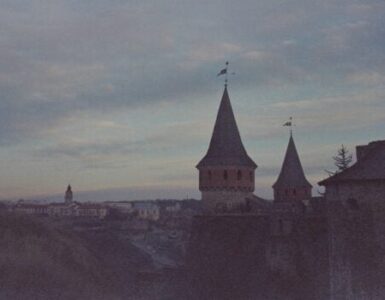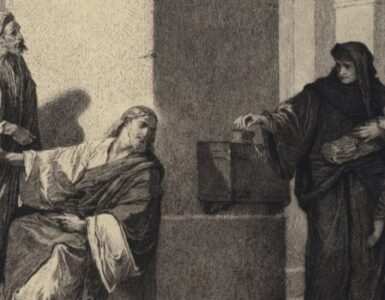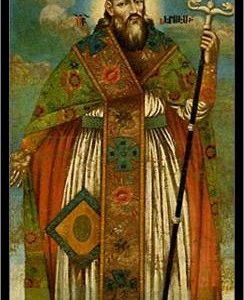Today, monasticism is usually seen as an archaic practice of insulation and irrelevance and is portrayed as quaint or even silly. Inside our fast-paced culture of connectivity and entertainment, it can be difficult to imagine the cloistered life as vibrant and significant. This is why it might sound odd to us to hear Pope Benedict describe the Patron of his Pontificate, St. Benedict of Nursia, as a “luminous star” pointing the way out of the “black night of history” that followed shortly after the fall of the Roman Empire. Pope Benedict was actually drawing on a biography written by St. Gregory the Great only a few decades after St. Benedict’s death. Even so, how could a star shine when locked away in an abbey?
Pope Benedict explains that part of St. Benedict’s illumination in the world couldn’t even be seen yet by St. Gregory. As one of the most important figures in early monasticism, St. Benedict’s life and work, the Pope says, “had a fundamental influence on the development of European civilization and culture.” This is due to St. Benedict’s founding of monasteries near Rome and his Rule for monastic living, a document which still governs monks and nuns all over the world.
St. Benedict of Nursia was born in 480 AD and was sent to Rome as a young man to study rhetoric. There, in the big city, Benedict watched in sadness as vice destroyed the lives of the young men around him. Fearing for his own soul, he left the city and took up residence in the countryside. Soon after, Benedict met a monk and decided to live as a hermit for three years. At the time, monks mostly lived alone (“monk” comes from the Greek word for “alone”) or in very small communities. One such community asked Benedict to be their abbot. He resisted at first, warning them that his ways would be too strict for them. But they persisted and soon found his warning well-founded. Apparently, Benedict was so strict that these pupils tried to poison him. Twice. After he was miraculously saved from their attempts, Benedict and these monks parted ways. But, soon, he founded several other small communities of 12 men each. Problems persisted in these communities as well so Benedict established a larger monastery at Monte Cassino. As this community thrived, he collected his instructions for monastic communities into what is now known as the Rule of St. Benedict. This Rule became the foundation of monasticism in the West and has been used in thousands of communities across all continents for 1500 years.
But how could St. Benedict and other men who “withdraw” from the world have as big an impact on civilization and culture as the Pope Emeritus claims? Well, anyone who has tasted Trappist beer or Maroilles cheese, both made by monks, might be willing to argue that these culinary accomplishments reveal the height of Western Civilization. Of course, monks have done more than make very good beer, cheese, and other products. For centuries, monasteries also served as the centers of education and medicine in Europe. Monks preserved much of the written works of antiquity, most of which might have been lost forever without these holy men. And the modern university system owes its existence to Christian monasticism. The list could go on and it would be difficult to overstate the importance of monasticism in the shaping of Western Culture. And all of this might not have come to be without Benedict and his perseverance and commitment to ora et labora (“pray and work”).
Pope Benedict is aware of all of this lasting cultural influence, of course. But he means much more when he speaks of the great monk as a “luminous star.” For Pope Benedict, his namesake was a “model for human life in the climb towards the summit of perfection” because he is a stellar example of those who “abandon themselves to God.” Because of this, St. Benedict joins his sister St. Scholastica, St. Anthony the Great, and other holy men and women who turned from all material comfort and embraced an ascetic lifestyle. But this life of discipline and prayer is not merely for hermits or extremists. Benedict’s Rule is marked by moderation and an understanding of the needs – both spiritual and physical – of human beings. His insistence that a monk’s life should be lived “so that God may be glorified in all things” is a goal that ought to extend to people of all vocations.
The relevance of St. Benedict’s life for modern Christians can be seen in his attitude towards prayer. Pope Benedict explains, “Without prayer there is no experience of God. Yet Benedict’s spirituality was not an interiority removed from reality. In the anxiety and confusion of his day, he lived under God’s gaze and in this very way never lost sight of the duties of daily life and of man with his practical needs.” This description sounds less like the stereotype of the reclusive monk and more like the kind of prayer life needed by those of us outside the cloister. The regimented prayer schedule developed and practiced by St. Benedict was not meant as an escape from life but rather as an ideal way to live connected with our Creator. Most of us may not be able to live like monks but we can turn our attention to prayer often. We too can devote ourselves to ora et labora in an attempt to glorify God in all things. In this way, St. Benedict is still a light for us today.












